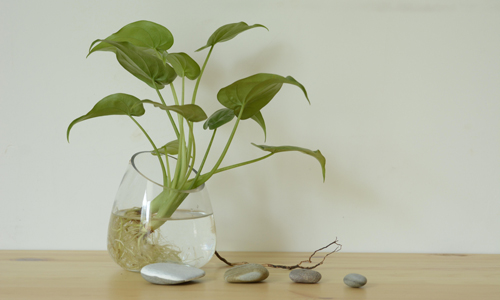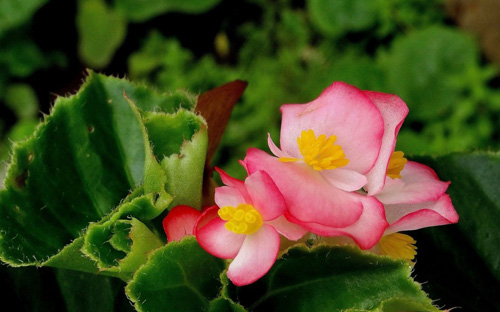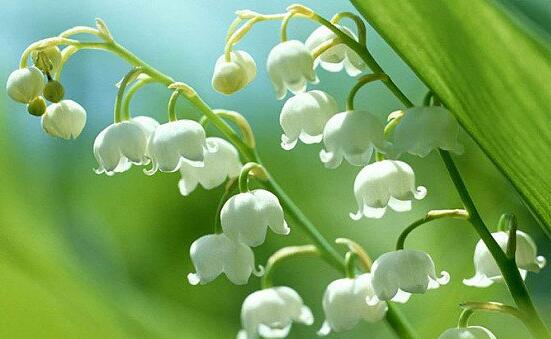Cultivation methods and matters needing attention of hydroponic plants what are the planting steps
With the rapid development of urban life and the continuous increase of flower species, there are also hydroponic flowers in addition to potted plants, dried flowers, flower arrangement and other flower forms. Hydroponic flowers are more and more liked by people because of their convenient materials, many styles of utensils, rich collocation and so on. Let's take a look at the breeding methods and matters needing attention of hydroponic plants.

I. planting steps
1. Remove the soil and wash the roots: pour the selected plants out of the soil, gently shake and pat them, then soak them in clean water for 15-20 minutes, then gently wash the roots with hands, and wash them with water for 2-3 times until the roots are completely soilless. When cleaning the root, it is best to use running water to reduce the damage to the root, and it is easy to clean.
2. Select utensils: according to the variety, shape, specification, design and color of hydroponic plant materials, choose round glass jars, glass bottles, glass pots and other utensils.
3. Put it into the water: put the washed plant into the selected vessel and fix the root. You can choose simple and good-looking stone materials such as colored stone and Yuhua stone. Inject tap water that does not pass through the root system. Initially change the water once a day, wash the roots and utensils at the same time, and reduce the number of water changes after a week. Waiting for the cultivated flowers to grow new roots in the water shows that they have adapted to the hydroponic environment and can change the water every 7 to 10 days or even longer.
II. Maintenance
1. Nutrient solution: plants that have just been hydroponized should not be added immediately. They should be kept in clear water for 10-15 days. After the plants have adapted to the hydroponic environment, a special nutrient solution for hydroponics should be added.
2. Change water: under normal circumstances, change the water every 5-10 days in spring and autumn, once in 5 days in summer, and once in 10-15 days in winter. When changing water, please expose half or 1/3 of the roots of the plant.
3. Cleanliness and hygiene: when changing water, clean water rinses the roots and containers of plants to build withered branches, fallen leaves and rotten roots, so as not to pollute the hydroponic environment.
4, moisturizing and keeping warm: when the climate is dry, sprinkle leaves with clear water to maintain humidity, you can choose a small spray bottle to spray water, it is appropriate to spray twice a day. When the indoor temperature is lower than 5 ℃, you should pay attention to keep the plants warm. # p# subtitle # e #
Matters needing attention
1. Water can choose pure water and tap water. Basin water should not be too much, it is necessary to keep some roots in the air, and 70% of the root length should be in the water. Pay attention to protect the root system, try to straighten out, so that most of the root can be soaked in water.
2. If mixed with fish, pay attention to frequent change of water and feed to the fish. If conditions permit, oxygen-increasing equipment and medicines can be added to ensure the living environment of fish.
3. Under normal circumstances, the cultivation water in the basin should be changed once in a month or two, and the tap water in daily life can be used, but note that when the water temperature is lower than the indoor temperature, the tap water should be placed for a period of time to keep the root temperature stable. Hydroponic flowers and plants that do not raise fish usually change water once a month or two. The replaced water can also be used as fertilizer for soil-grown plants and is rich in nutrition.
4. Plants should coordinate with the size of the bedroom space, and spacious rooms are suitable for larger plants to avoid emptiness. Relative to the smaller bedroom, you should choose smaller plants to avoid depression.
5. Hydroponic plants can be put directly on the ground. On the ground, there are large plants such as green radish column, ruby forest aspic column, emerald forest ape column, Qin Ye Xilin aspic column, brown bamboo, zebra evergreen and other large plants; on the table, there are medium-sized plants such as Olanke, tufted spring feather, hulk, green emperor, imperial clover and other small plants, such as bamboo crabapple, purple goose down, fairy pen, duck toe, hanging orchid, sycamore, Zhu Jiao, Dolan and other small plants. On the top of the cupboard, on the wall and for hanging decoration, choose plants with drooping branches and leaves, such as ivy, green pineapple, mini tortoise back bamboo, and so on.
6. Hydroponic flower apparatus: it is best to choose transparent utensils, on the one hand, you can observe the roots, and on the other hand, you can clearly observe the water quality and water level. The roots of all kinds of plants are of different colors, such as white, black, orange, etc., these roots are interspersed with entanglement, or delicate and lovely, they are an important part of appreciating hydroponics.
7. Hydroponic flowers should not be placed directly opposite the air outlet of the air conditioner, the branches and leaves will be hurt if the wind speed is too fast, the leaves will curl lightly, and the scorched edge will wither when heavy.
Cultivation and maintenance of hydroponic plants and matters needing attention hydroponic flowers are more and more popular because of their advantages such as convenient materials, many styles and patterns of utensils, rich collocation and so on. Compared with traditional soil planting flowers, hydroponic flowers also have the advantages of cleanliness, convenient maintenance and repeated use, so they are very suitable for home and office furnishings. First, planting step 1, remove the soil and wash the roots: pour the selected plants out of the soil, gently shake and pat, then soak in clean water for 15-20 minutes, then gently wash the roots with hands, and wash them with water for 2-3 times until the roots are completely soilless. When cleaning the root, it is best to use running water to reduce the damage to the root, and it is easy to clean. 2. Select utensils: according to the variety, shape, specification, design and color of hydroponic plant materials, choose round glass jars, glass bottles, glass pots and other utensils. 3. Put it into the water: put the washed plant into the selected vessel and fix the root. You can choose simple and good-looking stone materials such as colored stone and Yuhua stone. Inject tap water that does not pass through the root system. Initially change the water once a day, wash the roots and utensils at the same time, and reduce the number of water changes after a week. Waiting for the cultivated flowers to grow new roots in the water shows that they have adapted to the hydroponic environment and can change the water every 7 to 10 days or even longer. Second, maintenance 1, temperature: the best temperature for hydroponic plant growth is 5mur30 ℃, more than 35 ℃, most plants enter the dormant state, at this time need to stop spraying water. Chongqing is hot in summer, so outdoor hydroponic plants should be moved indoors to cool down. 2. Light: natural light coming in from the window. Avoid direct sunlight in summer. 3. Nutrient solution: plants that have just been hydroponized should not be added immediately. They should be kept in clear water for 10-15 days. After the plants have adapted to the hydroponic environment, a special nutrient solution for hydroponic culture should be added. 4. Change the water: in general, change the water every 5-10 days in spring and autumn, once in 5 days in summer, and once in 10-15 days in winter. When changing water, please expose half or 1/3 of the roots of the plant. 5. Cleanliness and hygiene: when changing water, clean water rinses the roots and containers of plants to build withered branches, fallen leaves and rotten roots, so as not to pollute the hydroponic environment. 6. moisturizing and keeping warm: when the climate is dry, sprinkle leaves with clear water to maintain humidity, you can choose a small spray bottle to spray water, it is appropriate to spray water twice a day. When the indoor temperature is lower than 5 ℃, you should pay attention to keep the plants warm. Third, matters needing attention 1. Water can choose pure water and tap water. Basin water should not be too much, it is necessary to keep some roots in the air, and 70% of the root length should be in the water. Pay attention to protect the root system, try to straighten out, so that most of the root can be soaked in water. 2. If mixed with fish, pay attention to frequent change of water and feed to the fish. If conditions permit, oxygen-increasing equipment and medicines can be added to ensure the living environment of fish. 3. Under normal circumstances, the cultivation water in the basin should be changed once in a month or two, and the tap water in daily life can be used, but note that when the water temperature is lower than the indoor temperature, the tap water should be placed for a period of time to keep the root temperature stable. Hydroponic flowers and plants that do not raise fish usually change water once a month or two. The replaced water can also be used as fertilizer for soil-grown plants and is rich in nutrition. 4. Plants should coordinate with the size of the bedroom space, and spacious rooms are suitable for larger plants to avoid emptiness. Relative to the smaller bedroom, you should choose smaller plants to avoid depression. 5. Hydroponic plants can be put directly on the ground. On the ground, there are large plants such as green radish column, ruby forest aspic column, emerald forest ape column, Qin Ye Xilin aspic column, brown bamboo, zebra evergreen and other large plants; on the table, there are medium-sized plants such as Olanke, tufted spring feather, hulk, green emperor, imperial clover and other small plants, such as bamboo crabapple, purple goose down, fairy pen, duck toe, hanging orchid, sycamore, Zhu Jiao, Dolan and other small plants. On the top of the cupboard, on the wall and for hanging decoration, choose plants with drooping branches and leaves, such as ivy, green pineapple, mini tortoise back bamboo, and so on. 6. Hydroponic flower apparatus: it is best to choose transparent utensils, on the one hand, you can observe the roots, and on the other hand, you can clearly observe the water quality and water level. The roots of all kinds of plants are of different colors, such as white, black, orange, etc., these roots are interspersed with entanglement, or delicate and lovely, they are an important part of appreciating hydroponics. 7. Hydroponic flowers should not be placed directly opposite the air outlet of the air conditioner, the branches and leaves will be hurt if the wind speed is too fast, the leaves will curl lightly, and the scorched edge will wither when heavy. Methods and steps of water culture of hyacinth how to cultivate hyacinth in water
When it comes to hyacinth, I believe we are no stranger to it. Hyacinth attracts more and more flower lovers by virtue of its beauty and flower fragrance. Hyacinth is a kind of bulbous plant, which can be cultured in water or soil. So do you know the methods and steps of hyacinth hydroponics? Let's study with the editor.
Methods and steps of hydroponic hyacinth cultivation
In general flower shops, hydroponic hyacinth is directly packed in a wide-mouthed glass bottle, which is convenient for everyone to raise directly. You can also buy a suit. When you buy it, you must pay attention to whether the chassis of hyacinth is damaged. The chassis is the place where the whole bulb germinates, and if it is damaged, it is completely useless.
Wash the glass bottle and pour into the tap water. Do not fill it. The water should be 1-3cm away from the hyacinth bulb chassis. This step is very important. Many friends fill the whole glass bottle with water, causing the bulb to rot directly.
Change the water for hyacinth once a week (to ensure the water quality in the bottle is clean). It is personally recommended not to use nutrient solution. Generally, tap water is enough to supply the growth of hyacinth.
Do not make any light before the small green leaves are sent out. Can be put in a small dark corner. With the white roots developed, you can bask in the sun. At the beginning of 1-2 hours, followed by a gradual increase in lighting time. If the weather is warm, it will open soon.
Matters needing attention
Every time you add water, you must not miss the bulb chassis. You need to leave a few centimeters of space for the roots to breathe. The aroma of hyacinth is relatively rich and poisonous, should not be put in the bedroom, should be put in the place of ventilation. Hyacinth pollen is easy to cause skin allergy, if you have allergic constitution, you should pay attention to it. It is unscientific to smell flowers close to the nose.
That's all I know about hyacinth today. I hope it will be helpful for flower friends to read this article. If you want to know more about hyacinth, please continue to pay attention to the succulent flower bed, we will provide you with more related knowledge!
- Prev

The propagation methods of crabapple flowers in four seasons have three ways of sowing, cutting and dividing plants.
Begonia can be said to be one of the most popular flowers in China, so many people raise crabapple flowers at home. Its four seasons crabapple likes a warm and humid environment, and is afraid of cold, early, heat and waterlogging, so it grows best in a semi-overcast, humid and warm environment.
- Next

What are the planting methods and varieties of Campanula
There are many varieties of bluebells, and there are different colors, which can be cultivated at home as a small potted plant, which has a very good beautification effect. So, how to grow wind chimes? Let's take a look at the planting method of bluebells.
Related
- Fuxing push coffee new agricultural production and marketing class: lack of small-scale processing plants
- Jujube rice field leisure farm deep ploughing Yilan for five years to create a space for organic food and play
- Nongyu Farm-A trial of organic papaya for brave women with advanced technology
- Four points for attention in the prevention and control of diseases and insect pests of edible fungi
- How to add nutrient solution to Edible Fungi
- Is there any good way to control edible fungus mites?
- Open Inoculation Technology of Edible Fungi
- Is there any clever way to use fertilizer for edible fungus in winter?
- What agents are used to kill the pathogens of edible fungi in the mushroom shed?
- Rapid drying of Edible Fungi

